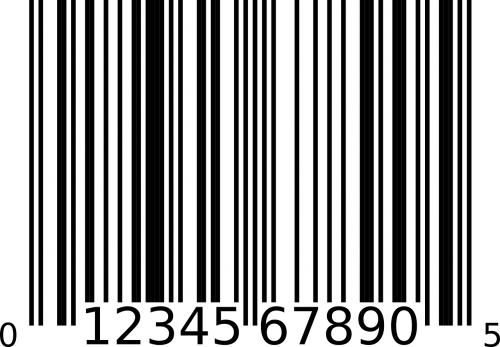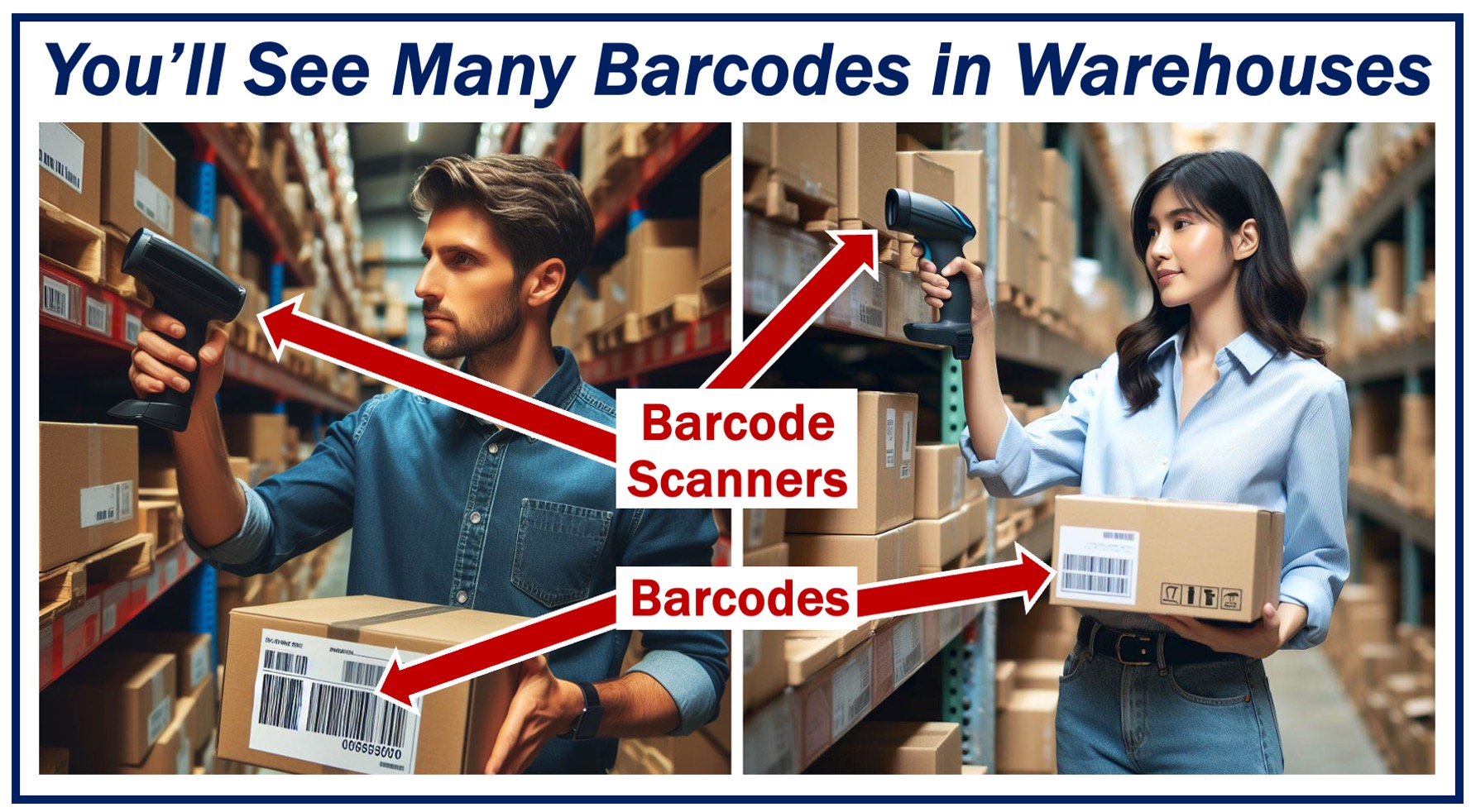A Barcode is a computer-readable pattern of parallel vertical lines of varying thickness. It is like a unique fingerprint for a product and is often printed on the item itself or its packaging. Organizations – such as manufacturers, distributors, retailers, and blood banks – use barcoding to track and keep stock of goods. The range of uses is growing.

A barcode is like a fingerprint that uniquely identifies a product.
Supermarkets are big users of barcodes. Checkout scanners read the codes of purchases. From that information, the tills can produce itemized receipts. Store computer systems also use the data for sales tracking and stock management.
A 10-pack of Wrigley Juicy Fruit gum was the first product to undergo a checkout barcode scan. The event took place in 1974 at a Marsh supermarket in the small town of Troy in Miami County, OH. The “customer” was Clyde Dawson, who was head of research and development at Marsh at the time. The checkout cashier, Sharon Buchana, used a National Cash Register device to scan the code.
Advantages of barcoding
Barcoding has helped all types of organizations to become more efficient. For example, the use of the codes in inventory management has increased:
- Speed: Scanning products as they arrive at warehouses allows data to go directly into inventory control systems.
- Accuracy: Compared with manual entry of data, scanning eliminates human error.
- Affordability: Scanners are inexpensive and easily connect with most types of inventory software.
- Ease of training and supervision: Learning how to use a scanner takes a lot less time than learning how to look up and enter details by hand.
Standards and Symbologies
There are different types of barcodes for different purposes. Symbologies is the word that the industry uses to describe them. Each symbology determines what the code means. It also decides how the scanner – and the system it links with – interprets the code.
The barcode symbology that an organization uses depends on several factors. One of these is the industry standard, which defines how to apply the symbology in a particular context. The other factors are: the code’s purpose and use, the data it encodes, and the printing and decoding methods.
Some common barcode types
Organizations can find themselves using several types of barcodes. In some sectors, such as retail, even a single item may have more than one code. The following paragraphs describe four common ones that consumers may come across.
Universal Product Code (UPC)
A 12-digit number that holds information such as product name, type, weight, and other details. Almost all types of products, from food to clothing, medicines, and electronics have UPCs. Even services have them. UPCs are used predominantly in the United States and Canada.
European Article Number (EAN)
A 13-digit number very like a UPC except that it also identifies a country. EANs apply globally. They came into being after the demand for barcodes grew outside of North America. International Article Number (IAN), is another name for EAN.
International Standard Book Number (ISBN)
A number that uniquely identifies a book. ISBNs can have 10 or 13 digits and typically appear on the backs of books. All ISBNs assigned from 1 January 2007 have 13 digits. Each country has its own national agency for ISBN.
Amazon Standard Identification Number (ASIN)
A block of 10 letters and/or numbers that uniquely identifies an item in Amazon’s online catalogue. For books, the ASIN is the same as the ISBN. For all other items, Amazon generates the ASIN as they upload it to the catalogue.
Barcoding continues to evolve
The uses of barcodes continue to evolve. Today’s barcodes can also store website URLs, which consumers can scan to quickly access product information or promotional content online. Furthermore, barcodes have been integrated into mobile payment systems, allowing customers to complete transactions with a simple scan.
The following examples show how barcoding has gone beyond the original intention of tracking goods.
In Germany, consumers pay a deposit on most plastic bottle purchases. However, they can get their deposit back in the form of credit toward a supermarket bill. When they put the bottle in the recycler, it reads the barcode on the bottle to work out the amount to credit.
Event organizers and theatre managers can use barcodes to control admission. The purchase of a ticket generates a unique code. Only valid barcodes allow entry. The method also helps organizers to track sales and monitor revenues. It also eases convenience for customers who can print tickets themselves, or even show them on their smartphones.

Video explanation
This interesting video presentation explains what a barcode is using simple and easy-to-understand language and examples.
